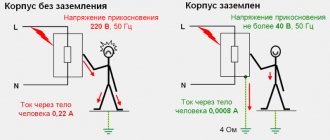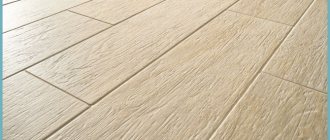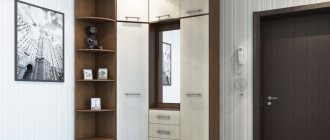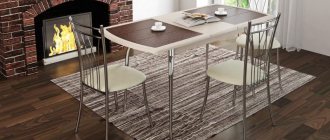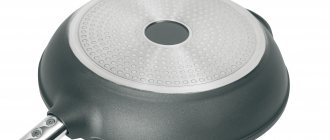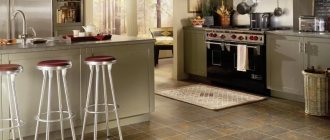In the fight against the spread of COVID-19, all means are good. One of these means is a quartz ultraviolet lamp, which can kill up to 99.9% of bacteria and viruses flying in the air and deposited on surfaces. We have already explained how quartz lamps can help fight the virus. Here we want to tell you how a regular quartz lamp differs from a recirculator, what models are available and how to choose a quartz lamp for your home.
What is the difference between a quartz irradiator and a recirculator?
Both of these devices are quartz lamps, but their design, purpose and degree of safety for the user differ. In quartz irradiators, the lamp is not covered by anything: its radiation acts directly on the air and surfaces. An excellent option for disinfecting the entire room. True, the ozone released during work is harmful to humans, so after treatment it is better to ventilate the room. In addition, you should not look at the lamp itself - you can damage the cornea of the eye.
The main difference between a recirculator and quartz irradiators is the ability to work in the presence of people. The lamp here is located inside a flask made of uviol glass, which blocks the formation of ozone. The fan drives air through the lamp, thus disinfection occurs. There is no risk of a burn to the cornea of your eye here either: you will not see the source of radiation.
- Exploitation
On guard of health: what do masks and respirators really protect against?
Recirculator or quartz lamp: which is better? It all depends on the purpose of use. For example, if you want to disinfect not only the air in the room, but also the objects in it, you will need an open type lamp. When returning home after visiting a supermarket or pharmacy, it would be wise to use a lamp to light up your outerwear (some types of fabric may fade). Also, some types of such lamps allow you to treat respiratory diseases in children, so you can buy them with the aim of killing two birds with one stone. the Solnyshko OUFK-01 quartz lamp is used for such purposes .
The recirculator disinfects only the air. It is worth buying it for rooms with high traffic (office, workshop) or for an apartment to regularly clean the air of bacteria, especially if there is a sick person in the apartment. After visiting the room, we turn on the lamp and the air is purified. Therefore, we decide on the goal, and then we will understand exactly which quartz lamp is better to buy.
Application areas of lamps
A quartz lamp is used to disinfect air, objects, food, and water. The quality of disinfection is not affected by location.
Installed inside schools, kindergartens, residential, public or medical premises according to the method of their fastening. Use in any room, bathroom, kitchen, cabinets, refrigerator, shoe rack. Portable irradiators are suitable for treating seats, handrails, and windows in vehicles.
In everyday life, quartz lamps are used:
- during seasonal surges of ARVI;
- to prevent infection if one of the household members is being treated for an infectious disease of the lungs, ENT organs, or skin;
- eliminating mold in the bathroom, rooms with poor ventilation, cabinets;
- disinfection of kitchen surfaces;
- disinfection of bedding, underwear, clothing from infections, dust mites;
- eliminating odors in shoes and dampness in the room;
- preventing food from rotting.
Ultraviolet light helps kill protein infections. Protective products against coronavirus are disinfected with open quartz lamps. Suits, gloves and masks are irradiated on both sides.
Watch the episode of Live Healthy:
Recirculator performance
Which quartz lamp is best for home in terms of performance? A bactericidal recirculator is capable of purifying a certain volume of air per unit of time. The higher this indicator, the faster it will clean the air in the room. Suppose we need to disinfect a room with an area of 10 m2 with a ceiling height of 2.8 m. Then we will need a device capable of serving 10 * 2.8 = 28 m3.
Please note that the performance indicator is indicated in m3/h. That is, if we take a device that pumps only 28 m3/h, then we will have to wait a whole hour for the air to be completely cleared. This is quite long, so it is better to take a device with higher performance.
In some models, instead of fan performance, the serviced area may be indicated. Everything is simpler here - we choose the device that corresponds to the area of the largest room in your apartment.
Types of quartz lamps
Quartz lamps are divided into several types according to safety class. The first generation devices required that the room be free of people when turned on. Modern devices are not so dangerous. Some of them allow you to be in the room while working. By design they are divided into:
- closed. Installed in ventilation for preventive purposes;
- open. People are prohibited from being near the switched on device. Often these are stationary devices installed on a wall or ceiling;
- shielded. You can stay in a room with such a lamp for a limited time. The emitted light hits the reflector and spreads throughout the room.
Tabletop view of bactericidal sources.
Speaking of security, devices are divided into:
- ozone-free . In this case, people may be in the room with the lamp on. The model is equipped with a special shell that does not allow UV rays and ozone to pass through;
- ozone _ It turns on only if there are no animals, people or plants in the room. In combination with air, ozone forms a mixture that is harmful to the body.
Germicidal and quartz lamps - what is the difference? Should I buy or not?
Degree of disinfection
A quartz lamp of an open or closed type has a parameter for the degree of disinfection of the room. The higher it is, the smaller viruses the device can kill (the size of COVID-19 is quite large compared to other viruses, so even a lamp with a disinfection degree below 95% will kill it). The best quartz lamp for the home should kill 90 - 99% of bacteria in the apartment.
Before treating diseases with a quartz lamp, consult your doctor about its correct use.
Rating of open and semi-closed bactericidal lamps
Crystal
The simplest, cheapest and quite effective lamp for disinfecting a room and the objects in it. It fights well against pathogens of infectious diseases such as acute respiratory infections, diphtheria, chickenpox, coronavirus COVID-19, whooping cough and rubella. It is also possible to use a lamp to combat fungus. Therefore, the lamp can be safely used to combat fungus in unventilated warehouses and boxes. The device is intended to serve a room with an area of no more than 20 m2 and a ceiling height of up to 3 m.
In order to kill the influenza virus, it will take 85 minutes, E. coli - 70 minutes, fungus - 565 minutes. The instructions that come with the device indicate the operating time for other viruses and bacteria (useful if you know exactly what infectious disease a person is suffering from in the room that needs to be disinfected). After using the lamp it is necessary for 20 minutes. ventilate the room, as it releases ozone.
Sun
Here is a whole series of semi-closed ultraviolet lamps produced by Novgorod. On sale you can find irradiators marked from 01 to 09 (marking, which is better suited for a children's room - this is OUFK-01. It is intended for disinfecting a room with an area of up to 12 m2, and also treats colds and diseases of the musculoskeletal system. OUFK lamps - 02, 04, 05, 06, 07 and 08 are more powerful analogues of the OUFK-01 model and are designed to treat larger areas. Which quartz lamp is better? It all depends on the area of your home.
The OUFK-03 lamp is a specialized quartz lamp operating in the UV range of 300 - 400 nm. It is more intended for tanning and producing vitamin D, although it can also disinfect a room.
How to properly carry out quartz treatment indoors
Before disinfection, the room is vacuumed, the floors are washed, dust is removed and the room is ventilated. This will make disinfection with a quartz lamp more effective.
Algorithm for operating an open irradiator:
- During quartzing, people leave the room and take the animals out. A screen is placed in front of the aquarium/terrarium.
- Check the integrity of the quartz lamp.
- Wear safety glasses.
- Turn on the quartz irradiator.
- They leave the room.
- They close the door and take off their glasses. The duration of quartzing is written in the instructions.
- After disinfection is completed, put on glasses, open the door, turn off the device, and remove the protection.
- Ventilate the room from ozone until the quartz lamps cool down.
Doctors recommend making a quartz treatment schedule. This way, household members will know the time and place when and where not to enter during disinfection.
A closed irradiator, in which the quartz lamp is not visible, can be used in the presence of people and pets. If the source is visible, it is better to leave the room so as not to burn your eyes. Pregnant women, hypertensive patients, cancer patients, people with heart disease, and tuberculosis should also go out.
Dr. Komarovsky explains whether the device should be installed in a child care facility:
Top recyclers 2021
Crystal-2
This is a closed type irradiator, so it is completely safe for both adults and children. Quite compact and lightweight, so it won’t take up much space in the apartment. The device's power is only 36 W, so its energy consumption is minimal. The recirculator fan capacity is 60 m3/h, sufficient to operate in a room with an area of no more than 20 m2.
The recirculator is equipped with two ultraviolet lamps with protective UV glass. They can kill up to 95% of bacteria and viruses flying in the air. Air ionization is not provided here. This device also has an older brother - Crystal-3. It performs all the same functions, but is designed for 30 - 40 m2 of area.
J-40
A good, expensive recirculator that, in addition to disinfection, cleans the air of dust, pollen and allergens. The circulated air goes through seven stages of purification: pre-filter, electrostatic, carbon, HEPA, photocatalytic, UV lamp and ionizer. Thanks to this, the air is purified from 99.9% of bacteria. This device can be used indoors with people. The device is equipped with a timer that allows you to set a specific operating time for cleaning a specific room.
The productivity of the device is 300 m3/h, which corresponds to approximately 110 m2 of area. In fact, this unit can completely purify the air in one hour in a medium-sized home. The fan performance can be increased or decreased depending on needs. There are also built-in dust and smoke sensors. For example, if someone smokes indoors, the device will automatically turn on and begin ventilating the air.
How else can you protect yourself from viruses:
- Will vodka help against coronavirus?
- Can a medical mask be used several times?
How to choose a good home appliance
Before purchasing, measure the volume of the room. For disinfection, one quartz device per 20 m3 is sufficient.
You cannot take the irradiator to an area larger or smaller than indicated in the product characteristics. Incorrectly calculated power will harm health or be insufficient for disinfection.
What to consider when choosing:
- an open-type device disinfects surfaces, water, air, but burns the leaves of indoor plants (flowers must be moved or shielded);
- a closed device is allowed to be used in public, but it only disinfects the air;
- A mobile lamp can be used to disinfect all rooms one by one;
- a stationary pendant or wall lamp will be out of reach of children and pets;
- the ultraviolet source (UV lamp) must be replaceable;
- A replacement UV lamp is purchased with a service life of 4000 hours (they last longer).
For home use, it is recommended to take a device with 1–3 ozone-free lamps. There are good reviews on the forums about “SN 211-115”, “Crystal-2”, “Quartz 1101”, “Solnyshko OUFK-01”, “Ekokvarts”, “OBN-150”, “OBN-450P 3 × 30”, "Dezar-2".
Open quartz irradiators are contraindicated for use by people with hypersensitivity or ultraviolet intolerance (photodermatitis, photosensitivity).
See comparison review:

